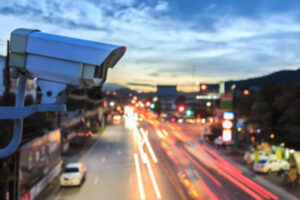By Chris Scheppmann
The urban transportation landscape is rapidly changing, with ride sharing services becoming ubiquitous and self-driving vehicles on the horizon. No longer do most travelers drive themselves to a parking facility near their ultimate destinations; today they are just as likely to be dropped off by an Uber or Lyft driver right at the curb in front of their destination.
This trend has had a significant impact on downtown traffic, cluttering the curb with unmanaged vehicle movement and creating an unsafe environment for drivers and pedestrians alike. And curbs will become even more cluttered when self-driving vehicles begin to populate our streets in significant numbers, dropping off their passengers and then taking off.
In fact, over the past two years we have already begun to experience these changes because of the Covid-19 pandemic. At the height of the initial wave of Covid, restaurants and stores introduced curbside pickup to serve their customers (and to survive). In many neighborhoods curbsides are now more like a free-for-all, with drivers pulling up wherever they like for however long they want. The proliferation of self-driving vehicles will just exacerbate this already serious issue.
A Technological Solution
The answer to these new curbside pressures can be found in Intelligent Camera Technology. Intelligent Camera Technology leverages the latest advancements in vison-based software technology to provide accurate and affordable curb management. The cameras monitor curbside activity in real time, analyzing what types of vehicles are using the curb and for how long, and transmitting that information to a cloud-based platform that determines whether each vehicle’s use of the curb is appropriate.
The heart of the curb management suite is specialized software that constantly receives data from curbside cameras and analyzes that data in real-time. The software manages a host of essential curb-related tasks, including TNC monitoring,…
By Geoffrey Garnier
What does the city of tomorrow look like?
The city of tomorrow, which calls itself “smart,” will implement connected solutions (thanks to sensors, artificial intelligence, Internet of Things, etc.) that will collect a set of usable and concrete data to make the best possible decisions.
The benefits for these cities are multiple: first, it allows them to improve the engagement of public authorities and citizens by providing solutions that involve them and offer them a better quality of life. But also, to solve their environmental problems with solutions that are ecologically oriented.
Cities are therefore more connected, efficient in their decision making and eco-responsible.
North American cities are particularly ahead of the curve on this smart city concept with the aim of improving their productivity as well as their connectivity. Many of them have joined the Cities for Climate Protection™ campaign organized by the UN, which commits them to implementing eco-responsible solutions to promote the climate transition. Of the 650 participating municipalities, nearly half are North American: 159 are American and 133 are Canadian.
Some sobering parking figures…
95%, 17h, 900,000 tons… But what do these numbers correspond to? These figures are all related to parking and are the results of different studies around the world:
- 95%? The time that a private vehicle remains in a parking space. (International Parking Institute, Why parking matters, 2015)
- 17h? The average time a typical user spends looking for a parking space over the course of a year. And that same average is 107 hours in New York. (INRIX, The Impact of Parking Pain in the US, UK, and Germany, 2017)
- 900,000 tons? Greenhouse gas emissions that can be avoided through smart parking solutions. (Köln auf dem Weg zur Smart City, 2017)
These figures can be thought-provoking.
Indeed, parking lots are very often neglected and little…





